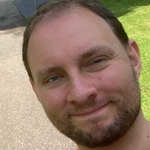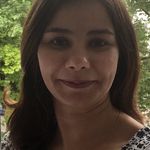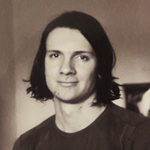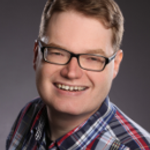The project concentrates on three major issues.
- The space of positive scalar curvature metrics. Let \(M\) be a non-compact connected spin manifold admitting a complete metric of uniformly positive scalar curvature. The main goal is to construct non-zero classes in higher homotopy groups of \({\mathcal R}^{scal\ge\epsilon >0}(M)\), the space of complete metrics of uniformly positive scalar curvature, and related moduli spaces.
- Fiber bundles with geometric structures and spaces of Riemannian metrics. Given a smooth bundle \(M\to E\to B\), one wants to investigate when there exists a Riemannian metric on the vertical tangent bundles (viewed as a smoothly varying family of metrics on the fibres) whose restriction to each fibre satisfies some specific curvature bounds like, e.g., being almost flat or (almost) nonnegatively (Ricci) curved. Furthermore, the goal is to study and compare different topologies on (moduli) spaces of Riemannian metrics and extend useful known results.
- Moduli spaces for nonnegative sectional and positive Ricci curvature. The aim is to study moduli spaces of metrics of nonnegative sectional curvature and / or positive Ricci curvature and to construct new examples of manifolds with disconnected moduli spaces. The plan is to find new invariants of moduli spaces and to give applications to non-compact manifolds of nonnegative sectional curvature, in particular, to define Kreck-Stolz invariants for new classes of closed manifolds and compute \(\eta\)-invariants using various techniques, e.g., Lefschetz fixed point formula in APS-index theory, rigidity and bordism theory.
Publications
We show that local deformations, near closed subsets, of solutions to open partial differential relations can be extended to global deformations, provided all but the highest derivatives stay constant along the subset. The applicability of this general result is illustrated by a number of examples, dealing with convex embeddings of hypersurfaces, differential forms, and lapse functions in Lorentzian geometry.
The main application is a general approximation result by sections which have very restrictive local properties an open dense subsets. This shows, for instance, that given any K∈R every manifold of dimension at least two carries a complete C^1,1-metric which, on a dense open subset, is smooth with constant sectional curvature K. Of course this is impossible for C^2-metrics in general.
| Journal | Comm. Pure Appl. Mathematics |
| Volume | 75 |
| Pages | 1377-1415 |
| Link to preprint version | |
| Link to published version |
Related project(s):
5Index theory on Lorentzian manifolds15Spaces and Moduli Spaces of Riemannian Metrics with Curvature Bounds on compact and non-compact Manifolds
Given a manifold $M$, we completely determine which rational $\kappa$-classes are non-trivial for (fiber homotopy trivial) $M$-bundles over the $k$-sphere, provided that the dimension of $M$ is large compared to $k$. We furthermore study the vector space of these spherical $\kappa$-classes and give an upper and a lower bound on its dimension. The proof is based on the classical approach to studying diffeomorphism groups via block bundles and surgery theory and we make use of ideas developed by Krannich--Kupers--Randal-Williams.
As an application, we show the existence of elements of infinite order in the homotopy groups of the spaces $\mathcal R_{\mathrm{Ric}>0}(M)$ and $\mathcal R_{\mathrm{sec}>0}(M)$ of positive Ricci and positive sectional curvature, provided that $M$ is $\mathrm{Spin}$, has a non-trivial rational Pontryagin class and admits such a metric. This is done by showing that the $\kappa$-class associated to the $\hat{\mathcal A}$-class is spherical for such a manifold.
In the appendix co-authored by Jens Reinhold it is (partially) determined which classes of the rational oriented cobordism ring contain an element that fibers over a sphere of a given dimension.
Related project(s):
9Diffeomorphisms and the topology of positive scalar curvature15Spaces and Moduli Spaces of Riemannian Metrics with Curvature Bounds on compact and non-compact Manifolds52Spaces and Moduli Spaces of Riemannian Metrics with Curvature Bounds on compact and non-compact Manifolds II
In this paper we study spaces of Riemannian metrics with lower bounds on intermedi- ate curvatures. We show that the spaces of metrics of positive p-curvature and k-positive Ricci curvature on a given high-dimensional Spin-manifold have many non-trivial homotopy groups provided that the manifold admits such a metric.
| Journal | Geometriae Dedicata |
| Link to preprint version | |
| Link to published version |
Related project(s):
15Spaces and Moduli Spaces of Riemannian Metrics with Curvature Bounds on compact and non-compact Manifolds52Spaces and Moduli Spaces of Riemannian Metrics with Curvature Bounds on compact and non-compact Manifolds II
We construct and study an H-space multiplication on \(\mathcal{R}^+(M)\) for manifolds M which are nullcobordant in their own tangential 2-type. This is applied to give a rigidity criterion for the action of the diffeomorphism group on \(\mathcal{R}^+(M)\) via pullback. We also compare this to other known multiplicative structures on \(\mathcal{R}^+(M)\).
| Journal | Transactions of the AMS |
| Link to preprint version | |
| Link to published version |
Related project(s):
9Diffeomorphisms and the topology of positive scalar curvature15Spaces and Moduli Spaces of Riemannian Metrics with Curvature Bounds on compact and non-compact Manifolds52Spaces and Moduli Spaces of Riemannian Metrics with Curvature Bounds on compact and non-compact Manifolds II
We present a rigidity theorem for the action of the mapping class group \(\pi_0(\mathrm{Diff}(M))\)on the space \(\mathcal{R}^+(M)\) of metrics of positive scalar curvature for high dimensional manifolds M. This result is applicable to a great number of cases, for example to simply connected 6-manifolds and high dimensional spheres. Our proof is fairly direct, using results from parametrised Morse theory, the 2-index theorem and computations on certain metrics on the sphere. We also give a non-triviality criterion and a classification of the action for simply connected 7-dimensional Spin-manifolds.
| Journal | Mathematische Annalen |
| Link to preprint version | |
| Link to published version |
Related project(s):
9Diffeomorphisms and the topology of positive scalar curvature15Spaces and Moduli Spaces of Riemannian Metrics with Curvature Bounds on compact and non-compact Manifolds52Spaces and Moduli Spaces of Riemannian Metrics with Curvature Bounds on compact and non-compact Manifolds II
We introduce Riemannian metrics of positive scalar curvature on manifolds with Baas-Sullivan singularities, prove a corresponding homology invariance principle and discuss admissible products.
Using this theory we construct positive scalar curvature metrics on closed smooth manifolds of dimensions at least five which have odd order abelian fundamental groups, are non-spin and atoral. This solves the Gromov-Lawson-Rosenberg conjecture for a new class of manifolds with finite fundamental groups.
| Journal | Geometry & Topology |
| Publisher | MSP |
| Volume | 25 (2021) |
| Pages | 497-546 |
| Link to preprint version | |
| Link to published version |
Related project(s):
15Spaces and Moduli Spaces of Riemannian Metrics with Curvature Bounds on compact and non-compact Manifolds
Based on Morse theory for the energy functional on path spaces we develop a deformation theory for mapping spaces of spheres into orthogonal groups. This is used to show that these mapping spaces are weakly homotopy equivalent, in a stable range, to mapping spaces associated to orthogonal Clifford representations. Given an oriented Euclidean bundle $V \to X$ of rank divisible by four over a finite complex $X$ we derive a stable decomposition result for vector bundles over the sphere bundle $\mathbb{S}( \mathbb{R} \oplus V)$ in terms of vector bundles and Clifford module bundles over $X$. After passing to topological K-theory these results imply classical Bott-Thom isomorphism theorems.
| Journal | São Paulo Journal of Mathematical Sciences (to appear) |
| Link to preprint version |
Related project(s):
15Spaces and Moduli Spaces of Riemannian Metrics with Curvature Bounds on compact and non-compact Manifolds52Spaces and Moduli Spaces of Riemannian Metrics with Curvature Bounds on compact and non-compact Manifolds II
We construct smooth bundles with base and fiber products of two spheres whose total spaces have nonvanishing A-hat-genus. We then use these bundles to locate nontrivial rational homotopy groups of spaces of Riemannian metrics with lower curvature bounds for all Spin manifolds of dimension 6 or at least 10, which admit such a metric and are a connected sum of some manifold and \(S^n\times S^n\) or \(S^n\times S^{n+1}\), respectively. We also construct manifolds M whose spaces of Riemannian metrics of positive scalar curvature have homotopy groups that contain elements of infinite order that lie in the image of the orbit map induced by the push-forward action of the diffeomorphism group of M.
| Journal | International Mathematics Research Notices |
| Link to preprint version | |
| Link to published version |
Related project(s):
9Diffeomorphisms and the topology of positive scalar curvature15Spaces and Moduli Spaces of Riemannian Metrics with Curvature Bounds on compact and non-compact Manifolds
In each dimension $4k+1\geq 9$, we exhibit infinite families of closed manifolds with fundamental group $\mathbb Z_2$ for which the moduli space of metrics of nonnegative sectional curvature has infinitely many path components. Examples of closed manifolds with finite fundamental group with this property were known before only in dimension $5$ and dimensions $4k+3\geq 7$.
Related project(s):
15Spaces and Moduli Spaces of Riemannian Metrics with Curvature Bounds on compact and non-compact Manifolds52Spaces and Moduli Spaces of Riemannian Metrics with Curvature Bounds on compact and non-compact Manifolds II
Let M be a simply connected spin manifold of dimension at least six which admits a metric of positive scalar curvature. We show that the observer moduli space of positive scalar curvature metrics on M has non-trivial higher homotopy groups.
Moreover, denote by \mathcal{M}^+_0(M) the moduli space of positive scalar cuvature metrics on M associated to the group of orientation-preserving diffeomorphisms of M. We show that if M belongs to a certain class of manifolds which includes (2n−2)-connected (4n−2)-dimensional manifolds, then the fundamental group of \mathcal{M}^+_0(M) is non-trivial.
| Journal | Int. Math. Res. Not. IMRN |
| Link to preprint version | |
| Link to published version |
Related project(s):
15Spaces and Moduli Spaces of Riemannian Metrics with Curvature Bounds on compact and non-compact Manifolds
The main result of this paper is that when M_0, M_1 are two simply connected spin manifolds of the same dimension d≥5 which both admit a metric of positive scalar curvature, the spaces \mathcal{M}^+(M0) and \mathcal{M}^+(M_1) of such metrics are homotopy equivalent. This supersedes a previous result of Chernysh and Walsh which gives the same conclusion when M_0 and M_1 are also spin cobordant.
We also prove an analogous result for simply connected manifolds which do not admit a spin structure; we need to assume that d≠8 in that case.
Related project(s):
15Spaces and Moduli Spaces of Riemannian Metrics with Curvature Bounds on compact and non-compact Manifolds
We give a characterization of those Alexandrov spaces admitting a cohomogeneity one action of a compact connected Lie group G for which the action is Cohen--Macaulay. This generalizes a similar result for manifolds to the singular setting of Alexandrov spaces where, in contrast to the manifold case, we find several actions which are not Cohen--Macaulay. In fact, we present results in a slightly more general context. We extend the methods in this field by a conceptual approach on equivariant cohomology via rational homotopy theory using an explicit rational model for a double mapping cylinder.
Related project(s):
15Spaces and Moduli Spaces of Riemannian Metrics with Curvature Bounds on compact and non-compact Manifolds
We obtain a Central Limit Theorem for closed Riemannian manifolds, clarifying along the way the geometric meaning of some of the hypotheses in Bhattacharya and Lin's Omnibus Central Limit Theorem for Fréchet means. We obtain our CLT assuming certain stability hypothesis for the cut locus, which always holds when the manifold is compact but may not be satisfied in the non-compact case.
Related project(s):
11Topological and equivariant rigidity in the presence of lower curvature bounds15Spaces and Moduli Spaces of Riemannian Metrics with Curvature Bounds on compact and non-compact Manifolds
An action of a compact Lie group is called equivariantly formal, if the Leray--Serre spectral sequence of its Borel fibration degenerates at the E_2-term. This term is as prominent as it is restrictive.
In this article, also motivated by the lack of junction between the notion of equivariant formality and the concept of formality of spaces (surging from rational homotopy theory) we suggest two new variations of equivariant formality: "MOD-formal actions" and "actions of formal core".
We investigate and characterize these new terms in many different ways involving various tools from rational homotopy theory, Hirsch--Brown models, A∞-algebras, etc., and, in particular, we provide different applications ranging from actions on symplectic manifolds and rationally elliptic spaces to manifolds of non-negative sectional curvature.
A major motivation for the new definitions was that an almost free action of a torus Tn↷X possessing any of the two new properties satisfies the toral rank conjecture, i.e. dimH∗(X;Q)≥2n. This generalizes and proves the toral rank conjecture for actions with formal orbit spaces.
Related project(s):
15Spaces and Moduli Spaces of Riemannian Metrics with Curvature Bounds on compact and non-compact Manifolds
We provide several results on the existence of metrics of non-negative sectional curvature on vector bundles over certain cohomogeneity one manifolds and homogeneous spaces up to suitable stabilization.
Beside explicit constructions of the metrics, this is achieved by identifying equivariant structures upon these vector bundles via a comparison of their equivariant and non-equivariant K-theory. For this, in particular, we transcribe equivariant K-theory to equivariant rational cohomology and investigate surjectivity properties of induced maps in the Borel fibration via rational homotopy theory.
Related project(s):
15Spaces and Moduli Spaces of Riemannian Metrics with Curvature Bounds on compact and non-compact Manifolds
We show that the moduli space of metrics of nonnegative sectional curvature on every homotopy RP^5 has infinitely many path components. We also show that in each dimension 4k+1 there are at least 2^{2k} homotopy RP^{4k+1}s of pairwise distinct oriented diffeomorphism type for which the moduli space of metrics of positive Ricci curvature has infinitely many path components. Examples of closed manifolds with finite fundamental group with these properties were known before only in dimensions 4k+3≥7.
| Journal | to appear in Transactions of the AMS |
| Link to preprint version |
Related project(s):
15Spaces and Moduli Spaces of Riemannian Metrics with Curvature Bounds on compact and non-compact Manifolds
In this article, we are interested in the question whether any complete contractible 3-manifold of positive scalar curvature is homeomorphic to \(\mathbb{R}^3\). We study the fundamental group at infinity, \(\pi^\infty_1\), and its relationship with the existence of complete metrics of positive scalar curvature. We prove that a complete contractible 3-manifold with positive scalar curvature and trivial \(\pi_1^\infty\) is homeomorphic to \(\mathbb{R}^3\).
Related project(s):
15Spaces and Moduli Spaces of Riemannian Metrics with Curvature Bounds on compact and non-compact Manifolds
In this work we prove that the Whitehead manifold has no complete metric of positive scalar curvature. This result can be generalized to the genus one case. Precisely, we show that no contractible genus one 3-manifold admits a complete metric of positive scalar curvature.
Related project(s):
15Spaces and Moduli Spaces of Riemannian Metrics with Curvature Bounds on compact and non-compact Manifolds
As shown by Gromov-Lawson and Stolz the only obstruction to the existence of positive
scalar curvature metrics on closed simply connected manifolds in dimensions at least
five appears on spin manifolds, and is given by the non-vanishing of the \(\alpha\)-genus
of Hitchin.
When unobstructed we will in this paper realise a positive scalar curvature metric by an
immersion into Euclidean space whose dimension is uniformly close to the classical Whitney
upper-bound for smooth immersions. Our main tool is an extrinsic counterpart of the well-known Gromov-Lawson surgery procedure
for constructing positive scalar curvature metrics.
Related project(s):
15Spaces and Moduli Spaces of Riemannian Metrics with Curvature Bounds on compact and non-compact Manifolds
Let N be a smooth manifold that is homeomorphic but not diffeomorphic to a closed hyperbolic manifold M. In this paper, we study the extent to which N admits as much symmetry as M. Our main results are examples of N that exhibit two extremes of behavior. On the one hand, we find N with maximal symmetry, i.e. Isom(M) acts on N by isometries with respect to some negatively curved metric on N. For these examples, Isom(M) can be made arbitrarily large. On the other hand, we find N with little symmetry, i.e. no subgroup of Isom(M) of "small" index acts by diffeomorphisms of N. The construction of these examples incorporates a variety of techniques including smoothing theory and the Belolipetsky-Lubotzky method for constructing hyperbolic manifolds with a prescribed isometry group.
Related project(s):
15Spaces and Moduli Spaces of Riemannian Metrics with Curvature Bounds on compact and non-compact Manifolds
Team Members
Prof. Dr. Christoph Böhm
Researcher
Universität Münster
cboehm(at)uni-muenster.de
Prof. Dr. Anand Dessai
Project leader
Université de Fribourg
anand.dessai(at)unifr.ch
Dr. Georg Frenck
Researcher
Universität Augsburg
georg.frenck(at)uni-a.de
Prof. Dr. Bernhard Hanke
Project leader
Universität Augsburg
hanke(at)math.uni-augsburg.de
Prof. Dr. Uwe Semmelmann
Researcher,
Project leader
Universität Stuttgart
uwe.semmelmann(at)mathematik.uni-stuttgart.de
Prof. Dr. Wilderich Tuschmann
Project leader
Karlsruher Institut für Technologie
wilderich.tuschmann(at)kit.edu
Dr. Masoumeh Zarei
Researcher,
Project leader
Universität Münster
mzarei2(at)uni-muenster.de
Former Members
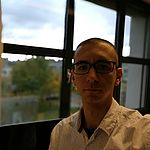
ao. Prof. Mauricio Bustamante Londoño
Researcher
Universidad Católica de Chile
bustamante.math(at)gmail.com

Dr. David González Álvaro
Researcher
Université de Fribourg
david.gonzalez.alvaro(at)upm.es
Jan-Bernhard Kordaß
Doctoral student
KIT Karlsruhe
Dr. Jian Wang
Researcher
Universität Augsburg
Priv.-Doz. Dr. Michael Wiemeler
Researcher
WWU Münster
wiemelerm(at)uni-muenster.de



